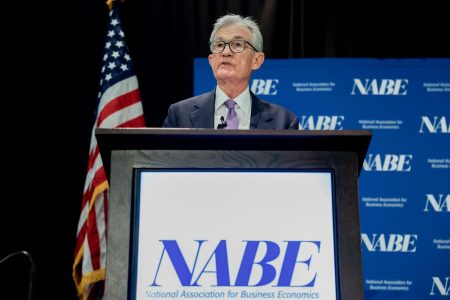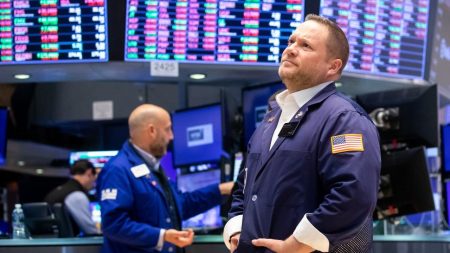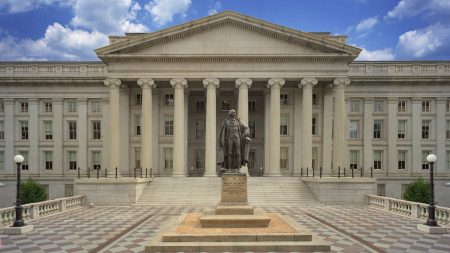Key takeaways
- Stock buybacks can create value for shareholders if they’re well-timed and the company has enough cash on hand to afford them.
- Stock buybacks, also known as share repurchases, can destroy value if they’re executed at inflated prices or at the expense of business investment, which can harm shareholders in the long run.
- The success of a buyback hinges on the competence and integrity of the management team. Disciplined leaders with strong operational performance are more likely to make buybacks that enhance long-term shareholder returns.
A stock buyback is when a company repurchases its own stock, reducing the total number of shares outstanding. In effect, buybacks “reslice the pie” of profits into fewer slices, giving more to remaining investors.
A stock buyback is one of the major ways a company can use its cash, including investing in its operations, paying off debt, buying another company and paying out the money as a dividend to investors.
Apple announced the largest stock buyback in U.S. history in May 2024, authorizing the repurchase of $110 billion of its own stock, as part of its fiscal second-quarter 2024 earnings report. With the announcement, Apple now has the six largest repurchase authorizations ever, according to Birinyi Associates, sharing sixth place in a tie with Chevron. It’s truly been a buyback behemoth.
Yet stock buybacks like this are surprisingly controversial among investors. Some see them as a waste of money, while others regard them as an excellent way to generate tax-advantaged returns for stockholders. Both critics and proponents have good points, but who’s right?
Here’s the upshot: Properly executed stock repurchases are one of the best and lowest-risk ways to create value for shareholders. But not all companies execute them properly. In the case of Apple, the company has done a good job of buying its stock and creating value for investors.
How stock buybacks work
To undertake a stock buyback, a company typically announces a “repurchase authorization,” which details the size of the repurchase in terms of the number of shares it might buy, a percentage of its stock or, most typically, a dollar amount. A company may use its own cash or borrow cash to repurchase stock, though the latter is usually riskier.
A company usually repurchases stock in the public market, just as a regular investor would. This means it’s buying from any investor who wants to sell the stock rather than from specific owners. By doing so, the company helps treat all investors fairly, since any investor can sell into the market. Investors are under no obligation to sell their shares just because the company is buying some back.
It’s important to understand that despite an authorization, a company may not buy back shares at all if management changes its mind, a new priority arises or a crisis hits. Stock buybacks are always done at the prerogative of management based on what they see as the needs of the firm.
How stock buybacks create value
Buybacks can elevate investors’ returns significantly, especially when pursued consistently over time. Some shareholders love them as a strategy and appreciate those top executives who use them well.
Share buybacks can create value for investors in a few ways:
- Share buybacks create value for continuing shareholders if the shares are purchased for less than their intrinsic value.
- Repurchases return cash to shareholders who want to exit the investment.
- With a buyback, the company can increase earnings per share, all else being equal. The same earnings pie cut into fewer slices — that is, fewer shares — is worth a greater proportion of the earnings.
- By reducing share count, buybacks increase the stock’s potential upside for shareholders who want to remain owners. If the company is worth $1 billion but is split fewer ways, each share is worth more.
- Stock repurchases are a more tax-efficient way to return the earnings of the business to shareholders relative to dividends, which are taxable to those who receive them.
These reasons become all the more compelling if a company buys back stock over time, provided it has the excess cash to do so. By reducing the share count by even 2 or 3 percent each year, a company can increase a shareholder’s return by a comparable amount. And the company may actually take advantage of its own form of dollar-cost averaging.
But just because buybacks can be good doesn’t mean they always are. In fact, poor managers have many ways to destroy value or siphon it off to themselves.
Disadvantages of a stock buyback
Stock buybacks can destroy value as well as create it, so those who oppose buybacks also make some compelling points about why buybacks can be bad.
Here are a few of the most common arguments against buybacks:
- Buybacks can be used to cover up stock issuance to managers. If the company issues stock-based compensation to managers, it dilutes the ownership of shareholders. Some management teams use buybacks to obscure how much issuance affects share count.
- Buybacks may allow managers to enrich themselves at the expense of shareholders. If managers have options (which become valuable once they’re over a specific stock price) and the ability to influence the stock price via repurchases, they may decide that they can temporarily boost the stock price in order to secure a gain on their options.
- Buybacks can simply be poorly done. If a management team is buying stock at any price rather than at a good price, it may be wasting shareholder capital. So if a stock is really only worth $100, but a management team is buying it for $150, that destroys value.
- Buybacks can starve the business of money needed in other areas, such as research and development or investment in new products and facilities. Over time, this practice can erode the competitive position of the business and weaken it.
These are legitimate reasons specific buybacks may be bad, but each reason relies on self-dealing or incompetent managers to negate the buyback’s value or make it destructive.
So each reason says more about the managers than about the buyback itself. Properly executed by a competent management team, buybacks are wonderful for investors. And if you’re investing in stocks, you need to analyze the competence and alignment of executives and have an opinion on them.
Still, critics sometimes argue against buybacks by saying that the money could go elsewhere, such as into operations. This reason may be correct in specific circumstances, such as if a company is starving its research budget or its capital investments in order to buy back stock. That’s up to investors (who own the business) and managers to decide. A well-run company would typically buy its own stock with cash left over from operations or with debt that it could comfortably repay.
Are buybacks good for investors?
Whether stock buybacks are good or bad depends a lot on who’s doing them, when they’re doing them and why. A company repurchasing stock while it starves other priorities is almost certainly making a huge blunder that will cost shareholders down the road.
But a competent CEO who spends cash on a buyback even after investing effectively in operations? That could be a good investment, because the CEO is focused on putting capital — shareholders’ money — into attractive investments. And if a management team is looking out for shareholders, it’s a good sign for the future of your investment.
To determine whether a specific buyback is a good use of investors’ money, you need to dig into the company and its situation:
- Why is it conducting the repurchase?
- Is the buyback simply vacuuming up shares issued to management?
- Are the shares being repurchased at attractive prices?
- Does management have a strong track record of delivering returns?
Those are a few of the most fundamental questions to answer, but if your company undertakes a buyback, you need to be able to understand whether it’s a good decision and why.
And that may rely on knowing the broader context. For example, newly public thrift banks regularly repurchase stock as a way to create value for shareholders, and investors expect them to do so. The track record here is excellent, as these banks go on to be acquired at much higher prices.
In Apple’s case, the company has repurchased hundreds of billions of dollars’ worth of stock over the last decade and more, and the stock has soared to new all-time highs year after year. In addition to Apple being driven by a strong core business and popular products, buybacks have helped boost earnings per share and turned Apple into one of the best long-term investments.
Companies buying back the most stock in 2025
Companies are able to buy back shares at any time, but share repurchases are typically highest during periods of strong economic activity, when companies have the cash available. In recent years, technology companies have been some of the largest buyers of their own shares.
Here are the companies with the largest total buyback authorizations for 2025 so far, according to Birinyi Associates (as of Aug. 7).
- Apple (AAPL) — The iPhone maker announced a $100 billion buyback authorization in May.
- Alphabet (GOOG) (GOOGL) — In April, the search giant announced a $70 billion authorization.
- JPMorgan Chase (JPM) — The big bank announced a $50 billion buyback authorization in July.
- Goldman Sachs (GS) — The investment giant announced a $40 billion authorization in April.
- Wells Fargo (WFC) — That same month, Wells Fargo authorized a buyback of up to $40 billion.
Due in part to buybacks, these stocks are regularly among the top holdings in the most popular index funds such as the S&P 500.
Warren Buffett’s views on stock buybacks
Legendary investor Warren Buffett has commented frequently on the merits of share repurchases over the years and has called their disciplined use the surest way for a company to use its cash intelligently.
In his 2011 letter to Berkshire Hathaway shareholders, he identified the two conditions that must be met in order for him to favor a company buying back its own shares.
- The company must have enough money to handle the operational and liquidity needs of the business.
- The company’s shares must be sold at a significant discount to a conservative estimate of their intrinsic business value.
In a later letter, Buffett explained through an example how share repurchases can add or destroy value for shareholders:
“If there are three equal partners in a business worth $3,000 and one is bought out by the partnership for $900, each of the remaining partners realizes an immediate gain of $50. If the exiting partner is paid $1,100, however, the continuing partners each suffer a loss of $50. The same math applies with corporations and their shareholders. Ergo, the question of whether a repurchase action is value-enhancing or value-destroying for continuing shareholders is entirely purchase-price dependent.”
Bottom line
While repurchases may be controversial from time to time, they’re just another way for a company to invest shareholders’ money. So, what typically drives whether a buyback is good or bad is the capability of the management team and its interest in being a good steward of the money entrusted to it by shareholders. Invest with a poor management team, and you may get burned.
— Kim Husband contributed to an update of this article.
Why we ask for feedback
Your feedback helps us improve our content and services. It takes less than a minute to
complete.
Your responses are anonymous and will only be used for improving our website.
Help us improve our content
Read the full article here












